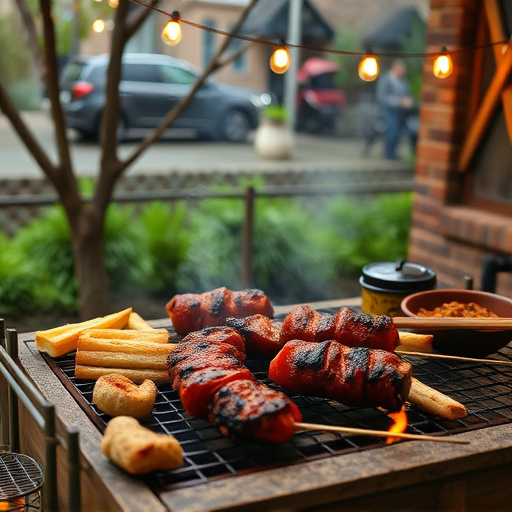Selecting the perfect cut (chuck roll or brisket) with good marbling for your BBQ beef recipe ensures both tenderness and juiciness after slow-cooking, resulting in desirable burnt ends. Seasoning is key – a blend of salt, pepper, garlic powder, paprika, brown sugar, or molasses adds flavor depth. Smoking at low temperatures (225°F/107°C) for extended periods caramelizes the edges and tenderizes the meat. Balancing your plate with fresh salad, grilled corn, or roasted potatoes, and pairing with IPA or full-bodied red wine elevates the BBQ beef experience.
“Unleash your inner BBQ master with our guide to crafting the perfect smoky beef burnt ends. From selecting the ideal cut of meat to mastering the art of caramelizing edges, this comprehensive guide will transform your culinary skills. Learn how to season and marinade for a rich flavor profile, smoke like a pro, and achieve that coveted crispy, caramelized finish. Discover optimal cooking times, and explore delicious serving suggestions and pairings. Elevate your BBQ game with this ultimate beef recipe.”
- Choosing the Right Cut of Beef for Burnt Ends
- Seasoning and Marinade: Building a Rich Flavor Profile
- The Art of Smoking: Techniques and Tips
- Caramelizing Edges: Adding a Sugary Crunch
- Cooking Time and Temperature: Mastering the Burn
- Serving Suggestions: Pairings and Side Dishes
Choosing the Right Cut of Beef for Burnt Ends
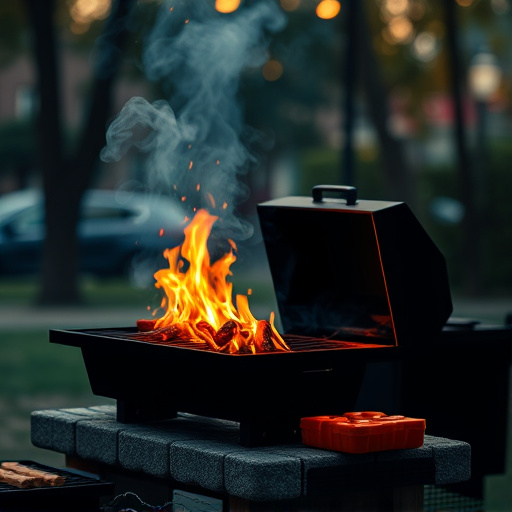
When crafting smoky beef burnt ends with caramelized edges, selecting the perfect cut of beef is key to achieving the desired texture and flavor profile. For a mouthwatering BBQ beef recipe, opt for cuts that are well-marbled and have good fat content. Chuck roll or brisket are excellent choices due to their rich, robust taste after slow-cooking. These cuts provide both tenderness and juiciness, essential qualities for burnt ends.
The right cut ensures that the beef retains its moisture during the cooking process, resulting in those delectable caramelized edges. Moreover, looking for a combination of lean and fatty sections allows for a balanced bite—a crucial element in any successful BBQ beef recipe. Properly chosen, these cuts will enhance the overall dining experience, making your burnt ends a true showstopper at any gathering.
Seasoning and Marinade: Building a Rich Flavor Profile
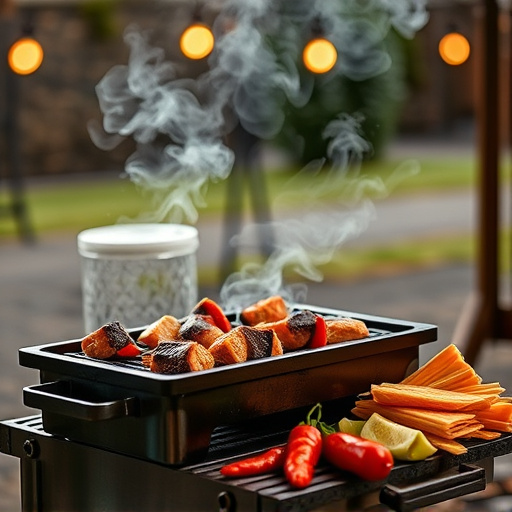
Seasoning and marinade play a pivotal role in crafting the ultimate BBQ beef recipe, especially when it comes to smoky burnt ends with caramelized edges. The process begins by infusing the meat with a blend of spices designed to enhance its natural flavors. A classic combination includes salt, pepper, garlic powder, and paprika, which not only add depth but also contribute to the desirable charred and smoky notes.
For a more complex profile, consider adding dry rub ingredients like brown sugar or molasses, which caramelize during cooking, creating those delectable burnt ends. This step is crucial in balancing the savory flavors with a touch of sweetness that complements the smoky aroma. The marinade acts as a vehicle to lock in moisture and intensify the overall taste, making your BBQ beef recipe truly exceptional.
The Art of Smoking: Techniques and Tips
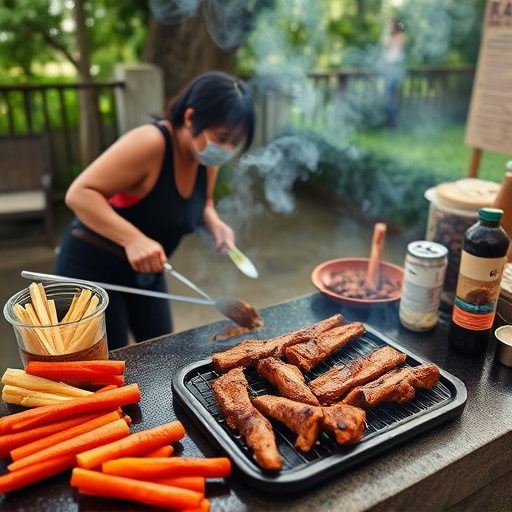
The art of smoking meat, especially beef for burnt ends, is a delicate balance of time, temperature, and technique. It’s a process that transforms raw ingredients into a mouthwatering BBQ beef recipe. To achieve caramelized edges and tender, smoky flesh, start by selecting the right cut of beef—brisket or rib are popular choices due to their fat content and marbling, which contribute to flavor and moisture retention during the long smoke.
Preparation is key. Seasoning plays a vital role in enhancing the meat’s natural flavors. A dry rub of salt, pepper, garlic, and paprika can be used hours or even days before smoking. For added depth, consider adding liquid smoke, but use sparingly to avoid an artificial taste. Smoking at lower temperatures (around 225°F/107°C) for extended periods allows the meat to cook slowly, ensuring it stays moist while imparting a subtle smokiness. Regularly monitor the fire and adjust as needed to maintain consistent heat. Flip and baste the beef occasionally with your favorite BBQ sauce or a simple mixture of butter and brown sugar to add moisture and caramelize the edges.
Caramelizing Edges: Adding a Sugary Crunch
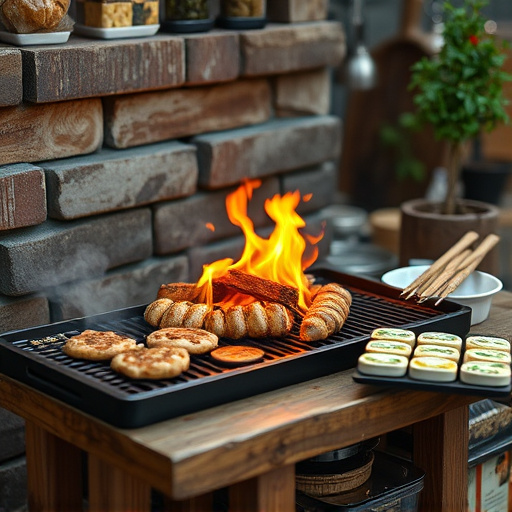
Caramelizing edges is a simple yet effective technique that transforms your BBQ beef recipe from good to extraordinary. By applying a generous coating of brown sugar or a dry rub blend containing sugar, salt, and spices, you initiate a chemical reaction during the slow-cooking process. This reaction results in a crispy, caramelized exterior, adding a delightful contrast to the tender, smoky beef burnt ends.
The sugary crunch not only enhances the visual appeal but also contributes a rich, complex flavor profile. It’s a game-changer for any BBQ lover, elevating your meat from a mere dish to an experience that tantalizes the taste buds. This trick is especially useful when preparing BBQ beef recipes, ensuring each bite is packed with both mouthwatering tenderness and crisp, sweet notes.
Cooking Time and Temperature: Mastering the Burn
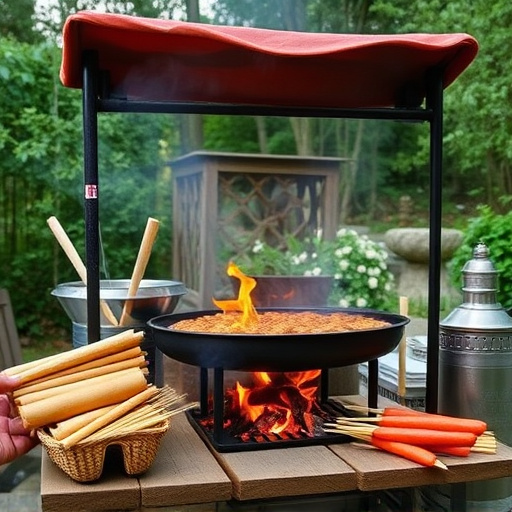
To achieve perfectly smoky beef burnt ends with caramelized edges, understanding and mastering the cooking time and temperature is key. The ideal BBQ beef recipe involves a combination of slow cooking and high heat. Typically, this process begins by slowly braising the beef at around 250-300°F (120-150°C) for about 3-4 hours, allowing it to tenderize and develop rich flavors.
Once the beef is tender, increase the temperature to 400-450°F (200-230°C) to achieve those coveted burnt ends. This final stage should take approximately 15-20 minutes, depending on the thickness of your meat and desired level of charring. The high heat not only gives the beef its distinctive smoky flavor but also helps to caramelize the edges, creating a delightful contrast between tender, juicy interior and crispy, caramelized exterior.
Serving Suggestions: Pairings and Side Dishes
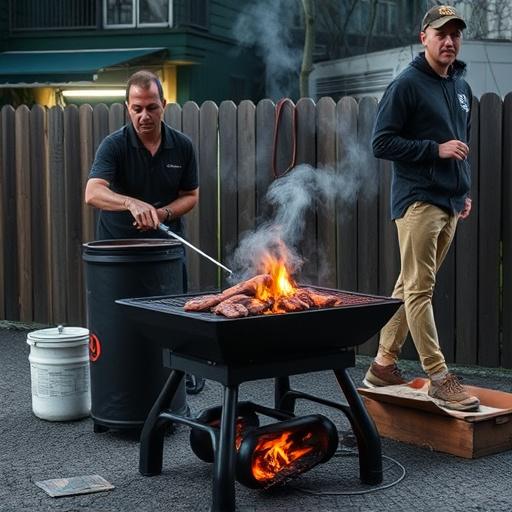
When serving these smoky beef burnt ends with caramelized edges, think about creating a balanced plate that enhances the rich and savory flavors. A fresh and crisp salad can provide a much-needed contrast to the robust beef. Consider a mix of leafy greens, sliced tomatoes, and cucumbers dressed in a light vinaigrette. For a side dish, grilled corn on the cob or roasted potatoes with herbs offer complementary textures and tastes.
Pairing these burnt ends with a selection of beers or a robust red wine can be a delightful experience. A medium-bodied beer like an American IPA or a full-flavored red blend will stand up to the intense caramelized edges, while a rich and creamy blue cheese or a sharp cheddar can cut through the smokiness, making each bite a delight.
